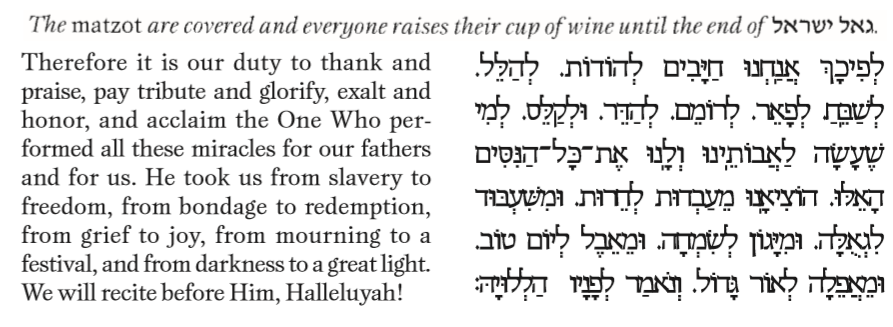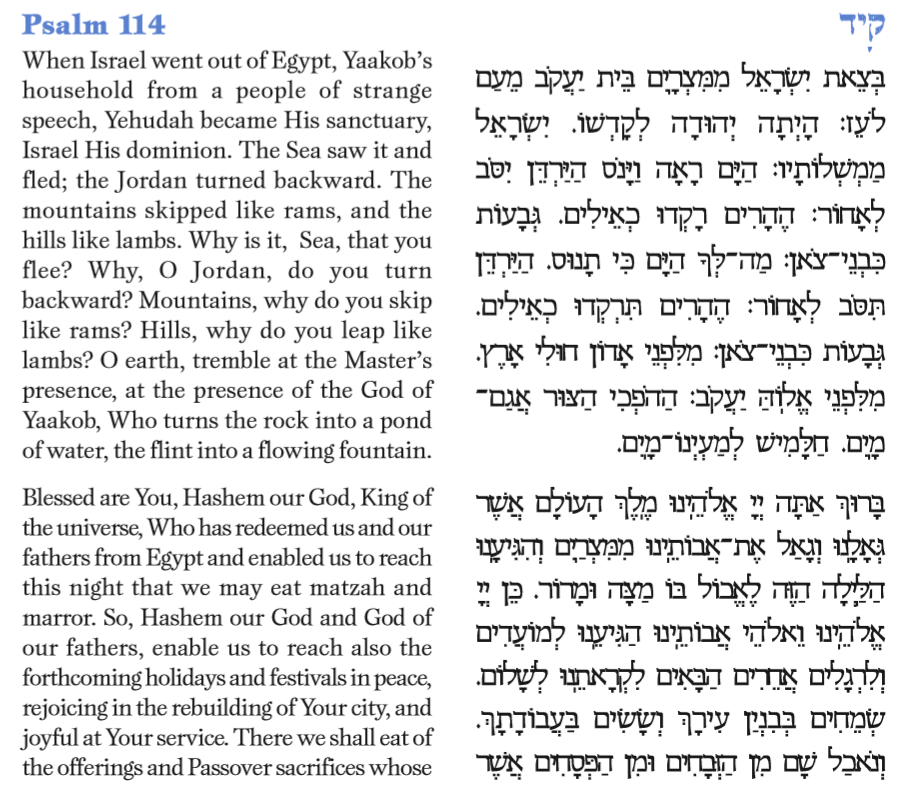Chapter 34: Second Cup




Drink the second cup while reclining on the left side. A berachah is not recited.
The Second Cup of Wine
A. Both men and women are required to make the berachah of Ga’al Yisrael at the conclusion of Maggid and to drink the second cup of the four cups of wine while reclining.
B. A man who forgot to recline while drinking the wine must drink an additional cup of wine, without a berachah.
C. A woman who forgot to lean is not required to drink an additional cup of wine.
D. One who cannot drink wine or grape juice for medical reasons must still recite the berachah of Ga’al Yisrael.
What do the four cups of wine symbolize?
The four cups refer to the four stages in the redemption, or the four “leshonot shel geulah,” the four expressions of redemption:
והוצאתי — “I will take you out from the burdens of the yoke of Egypt.” Even if we had stayed in Egypt, our yoke of servitude would have been removed. והצלתי — “I will rescue you from their slavery.” Hashem delivered us from Egypt. וגאלתי — “I will redeem you with an outstretched arm.” This refers to the wondrous miracles which Hashem wrought against the Egyptians. He confused and crushed our Egyptian oppressors. ולקחתי — “I will take you to Me for a nation.” This is the greatest aspect of the Redemption. Hashem brought us near Him, thereby granting us spiritual redemption as well.
Another reason, stated by Hazal, connects the four cups of wine with the four times Pharaoh’s cup is mentioned in Sefer Bereishit. Both Yosef and Pharaoh’s sar hamashkim, chief wine steward were imprisoned together in Egypt. Pharaoh’s cups are an allusion to Bnei Yisrael’s slavery. It is as if Hashem were saying to Yosef, “The slavery begins as the ‘cup’ is put into the hands of Pharaoh. In the end, however, the cup will be taken from him as your children are redeemed, and they will subsequently thank Hashem by drinking four times from the cup which represents salvation.”
The four cups of wine are also likened to the four kingdoms that followed Egypt in enslaving Klal Yisrael. Babylon, Persia, Greece, and Rome were synonymous with treachery against our people. Consequently, Hashem will exact retribution from them with four different measures of punishment. The Abarbanel suggests that the four cups reflect four periods of redemption for Klal Yisrael. The first form of redemption took place when Hashem chose Avraham Avinu and his descendants to be the forerunners of His chosen people. The second redemption is with us every day as Hashem sustains us throughout our exile. Despite the various hardships and persecutions to which we have been subjected, we remain a vibrant nation. The fourth redemption awaits us with the advent of Moshiah Tzidkeinu.
The Vilna Gaon says that the four cups symbolize four worlds: the world we live in, the days of Moshiah, the period of Tehiat Ha’Meitim, revival of the dead, and Olam Ha’ba, the World To Come. If one carries out the mitzvot of the Seder in the prescribed manner, with the correct intent and emotion, he is assured of these four worlds.
The Maharal sees the four cups of wine as alluding to the four Matriarchs — Sarah, Rivkah, Rachel, and Leah. It was their virtues coupled with those of the Avot, Patriarchs through which Klal Yisrael was redeemed from Egypt. Indeed, Hazal teach us that the three primary mitzvot of the Seder night — Pesah, matzoh, and marror — are observed in the merit of the Avot.
Lastly, the Bnei Yissachar opines that the four cups serve as a reward for the four virtuous deeds carried out by the Jews in Egypt: They did not change their Hebrew names; they did not change their language from lashon hakodesh; they did not commit acts of immorality, and they did not speak lashon hara against each other. Although the Jews committed many grave sins, it was these four virtues, which remained as the last barrier to total assimilation, and saved them from spiritual annihilation. (Peninim Haggadah)

